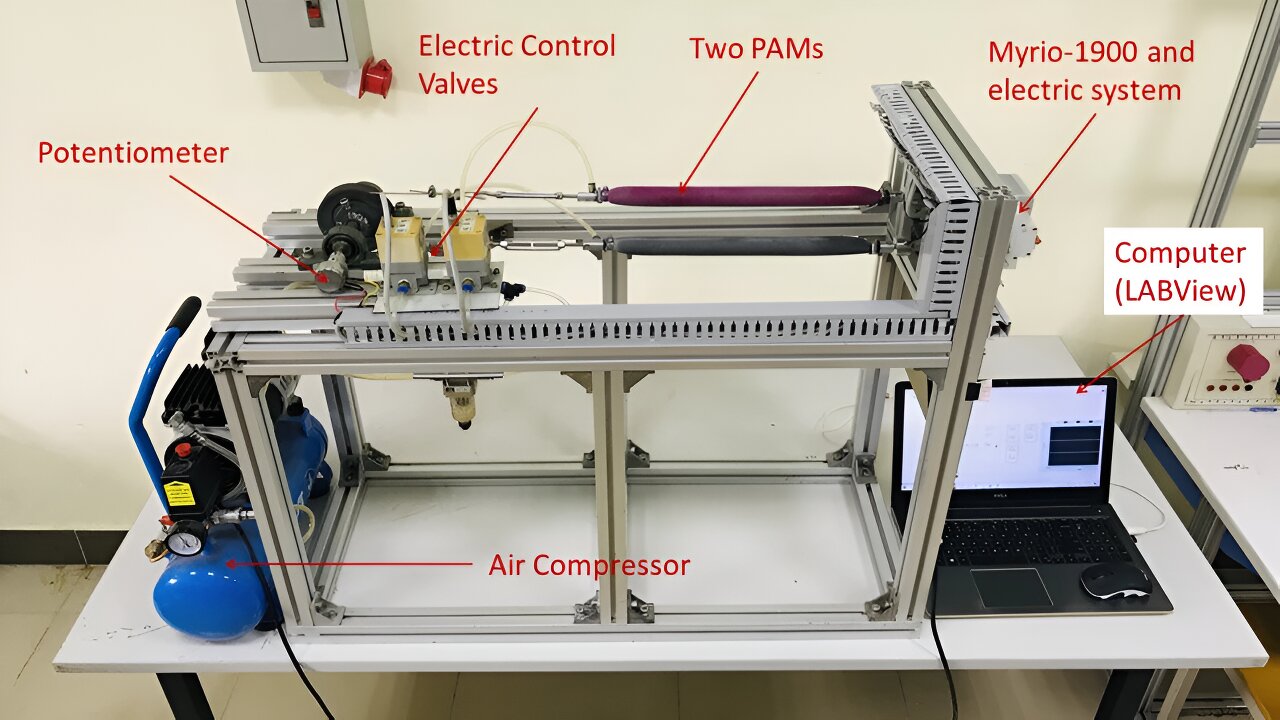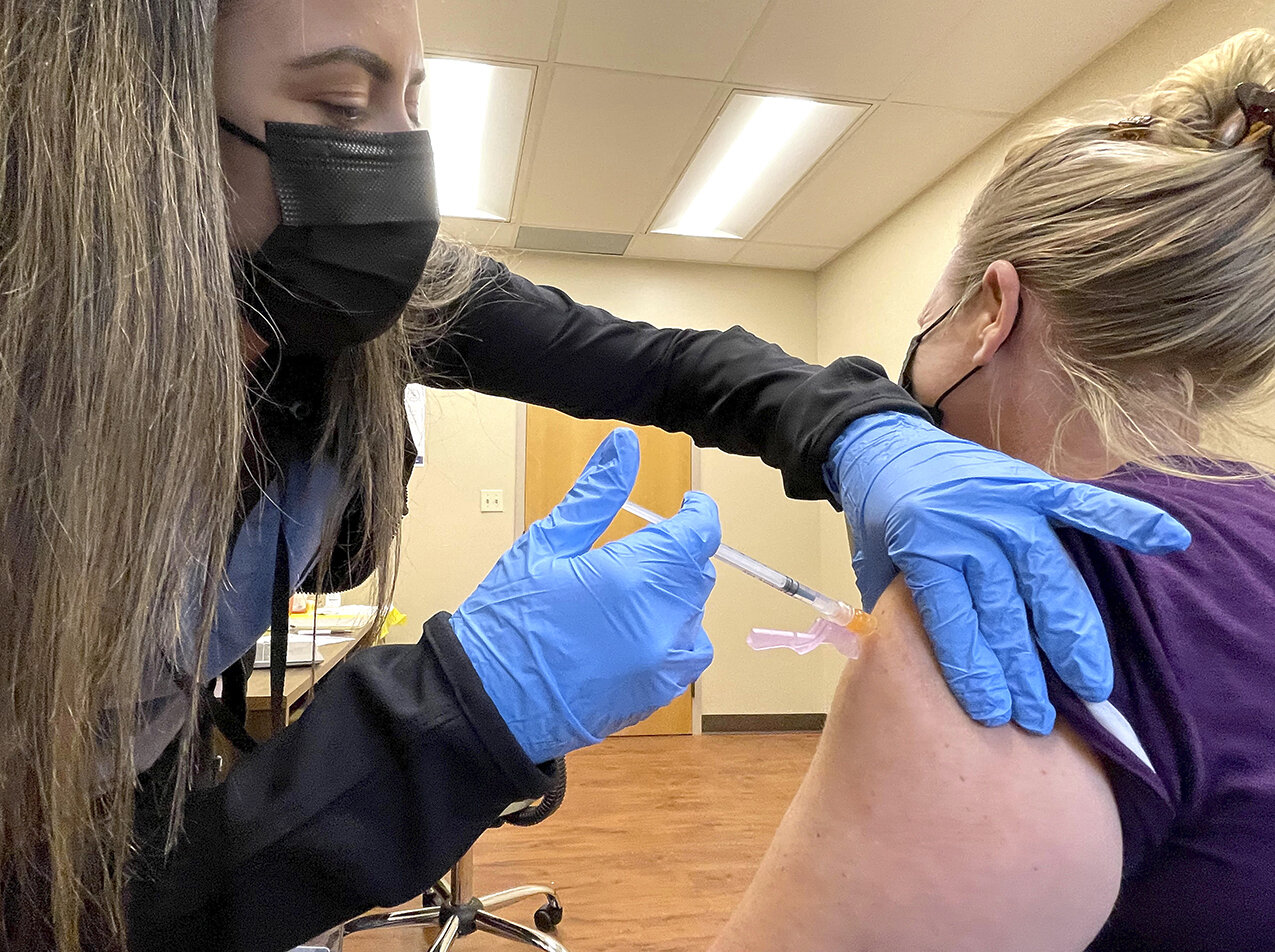#Advancing trajectory tracking control of pneumatic artificial muscle-based systems


In recent years, pneumatic artificial muscles (PAMs) have emerged as promising actuators for simulating human-like movements, with prominent applications in various industries including robotics, rehabilitation, and prosthetics. PAMs are usually composed of rubber and covered with braided yarn and can mimic the mechanics of human muscles. They can stiffen and contract on being supplied with pressurized air and soften and lengthen upon releasing the air. However, PAM is a nonlinear system and experiences huge latency, making it important to have control systems that can regulate their performance.
While determining a nonlinear mathematical model for PAM is challenging, researchers in the past have proposed many control methods to solve the problems associated with PAM. However, while these traditional control methods exhibit decent performance, they are not able to deal with PAM’s nonlinearity and hysteresis. Moreover, while learning control algorithms have been theoretically effective in improving PAM-based system’s performance, their implementation is practice is quite difficult.
To overcome these limitations and address this open problem, a group of researchers led by Associate Professor Ngoc-Tam BUI of the Innovative Global Program, College of Engineering, Shibaura Institute of Technology in Japan, along with Dr. Quy-Thinh Dao of Hanoi University of Science and Technology, has proposed a novel solution.
In their study published in the journal Scientific Reports, they propose a control approach called “adaptive fuzzy sliding mode controller (or AFSMC)” that uses fuzzy logic (a type of computational thinking) for estimating control parameters of PAM-based systems.
“The proposed innovative control strategy leverages the Takagi–Sugeno fuzzy algorithm to estimate the disturbance component and automatically update the output variable values, demonstrating enhanced tracking accuracy and adaptability compared to traditional sliding mode control methods,” explains Associate Professor BUI.
The researchers first developed a sliding mode controller with a control signal that incorporates a special variable to estimate the disturbances and improve the control performance. Next, they designed an adaptive fuzzy algorithm, wherein parameter vectors of the component rules are automatically updated by an adaptive law, to compute the disturbance variable.
The stability of the developed ASFMC algorithm was then analyzed using the Lyapunov stability condition (used to study the stability of a nonlinear system). Furthermore, the researchers conducted a series of experiments to assess the performance of their controller by comparing it with traditional sliding mode control methods.
Remarkably, the AFSMC approach exhibited improved tracking accuracy, with a root mean square error value of 2.68° at a frequency of 0.5 Hz under load, while the sliding mode controller approach displayed a higher value of 4.21°.
Moreover, it showed exceptional adaptability to abrupt external disturbances. Explaining these results further, Associate Professor BUI says, “In a comparative evaluation against the well-known commercial rehabilitation system, LOKOMAT, the AFSMC controller delivered similar performance. It also exhibited superior adaptability to sudden load changes, swiftly returning to the desired trajectory by manipulating its control output.”
These findings thus point to the potential of the novel AFSMC approach for integration into robotic rehabilitation devices, assistive devices, and physical therapy equipment for precise and personalized therapy. Moreover, this approach can aid in the design and development of advanced prosthetic limbs for enhanced functionality and rehabilitation outcomes.
Talking about the long-term implications of this study, Associate Professor BUI says, “With the outcomes of this research, the emergence of a commercial rehabilitation system actuated by PAM can be anticipated within the next 5 to 10 years. This innovative system will provide significant benefits to patients, including those with spinal cord injuries and stroke and others requiring rehabilitation.”
Minh-Duc Duong et al, Adaptive fuzzy sliding mode control of an actuator powered by two opposing pneumatic artificial muscles, Scientific Reports (2023). DOI: 10.1038/s41598-023-34491-3
Provided by
Shibaura Institute of Technology
Citation:
Advancing trajectory tracking control of pneumatic artificial muscle-based systems (2023, August 21)
retrieved 22 August 2023
from https://techxplore.com/news/2023-08-advancing-trajectory-tracking-pneumatic-artificial.html
This document is subject to copyright. Apart from any fair dealing for the purpose of private study or research, no
part may be reproduced without the written permission. The content is provided for information purposes only.
If you liked the article, do not forget to share it with your friends. Follow us on Google News too, click on the star and choose us from your favorites.
For forums sites go to Forum.BuradaBiliyorum.Com
If you want to read more Like this articles, you can visit our Science category.




